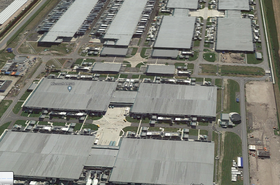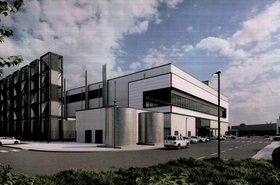This summer’s record temperatures have left us all feeling a little hot under the collar, not least so for anyone involved in data centers. It started on the 10th July when Amazon in London declared a ‘thermal event’ had caused a power outage, and the following week cloud services and servers hosted by Google and Oracle in the UK dropped offline due to cooling issues.
There are rumours that some NHS Trusts had also been hit and after some weeks were operating on paper-based system as they are still trying to get servers up and running after a total melt down.
So how can we ensure data center availability and address the growing trend of extreme temperatures to minimize the impact?
Dawning realization
Operators and data center designers have been aware of the risk of rising temperatures for some time, but with global temperatures now clearly on the rise, the issue is becoming more pressing. However, it is worth remembering that many data centers have been designed with a level of inbuilt security and resilience, and many of them operate below the designed capacity. So, from a power and cooling perspective there is some comfort as often a proportion of the heightened conditions can be absorbed as a drop in performance will still be able to satisfy the required demand.
Designers have typically used N=20, which is the most extreme weather conditions in the local area over the last 20 years, but we have recently seen big jumps in recorded maximum termperatures, for instance from 38.7 to 40.3 degrees in the UK in only three years, so thie may need to be reconsidered. Easily said, but with pressure to meet net zero sustainability goals it is not sustainable to simply up the cooling spec. We must develop some smarter ways of dealing with extreme, but short term, weather conditions.
For example, owners and operators can look at developing strategies around short-term load reduction by turning off specific ‘non-essential’ systems to reduce the overall strain on the cooling systems.
During their London outages, Oracle and Google disconnected non-critical hardware to reduce the overall load and successfully maintained supply, although this did leave some users losing access to services in the short term. With planning and foresight this is a strategy that could help in the short to medium term with limited impact on key users, especially with early warnings and appropriate expectation management.
Having a robust buliding management system (BMS) which provides historical data and analytics is key to providing the required intelligence, enabling data led decisions on what changes can be made and when to make them, and helping to successfully manage services through extreme conditions.
In these circumstances remote monitoring tools are invaluable, as they can monitor live conditions and use this information to make preventative decisions based on real-time operational data. before this has an impact on service and up-time. With DCIM platforms like EcoStruxure there is also the ability to link the IT with the live data, to automate the strategy.
Longer term it is not just cooling that is at risk. The power and water that enables cooling also need strategies for the future. Recently, we saw the highest recorded cost of energy, 5000 percent higher than the normal price, imported from Belgium. This should also raise the question of how we power our data centers, where we locate them and whether a strategy of leveraging resilience and reliance across geographically diverse facilities will reduce embodied carbon, reduce inefficiencies and overspecification and, importantly, reduce the risk of future outages.
Prepare for droughts
Prolonged periods of extreme weather could also lead to droughts, as we are seeing now with the Met Office figures showing the driest July for 111 years, and some data center designs rely heavily on the use of water, increasing pressure on the local communities and the water supply companies.
So we need to consider whether, in the future, we may see more moratoria on data centers based on the availability of water, and if drought conditions lead to an outage for some existing facilities.This is already being seen across some States in the US.
Whilst some data centers are partially prepared, it is clear that the impact of hotter weather on data centers can be significant, from increased cooling costs to potentially damaging expensive Infrastructure so short, medium and longer-term strategies are required.





